We acknowledge the Traditional Owners of the land on which the Queensland Art Gallery | Gallery of Modern Art stands and recognise the creative contribution First Australians make to the art and culture of this country.
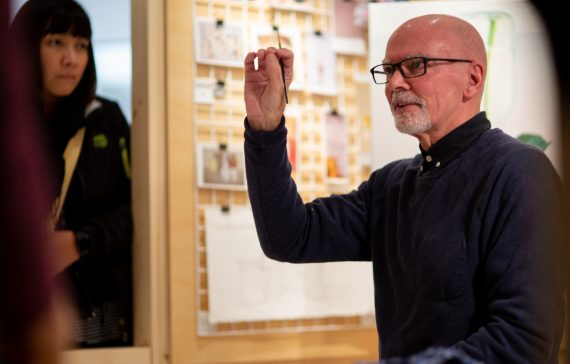
At the start of a demonstration at the Queensland Art Gallery in June 2019, John Honeywill explains to observers that he often needs to work steadily for long periods of time on one small area within his composition.
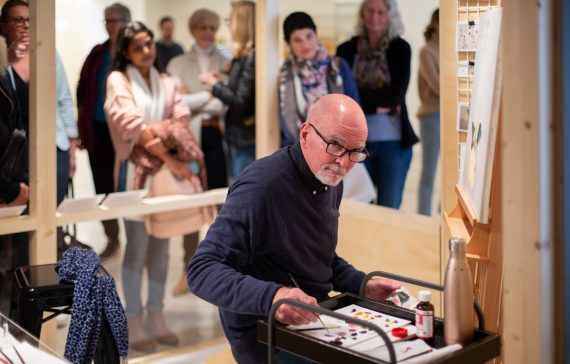
Notice the arrangement of paint on John’s palette (in this image and the next). As a very experienced oil painter, his painting process is finely-tuned around a knowledge of colour mixing that creates dynamic relationships between colours on the canvas – a process that is controlled on his palette.
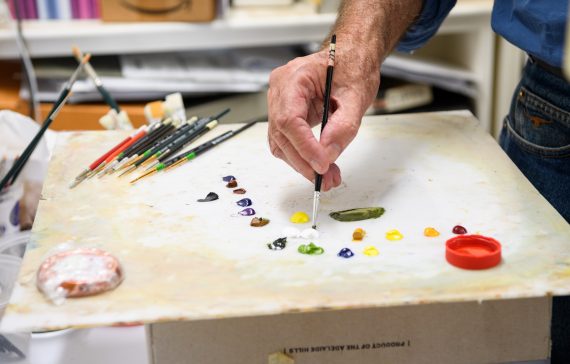
This image is from the artist’s home studio. The use of a white sheet of acrylic is a great idea for painting with oils or acrylic. Never use a palette with a porous surface. You don’t want your paint to absorb into your palette. The use of a bottle cap to hold a small amount of painting medium is also an effective way to work and a neat example of the benefits of recycling.
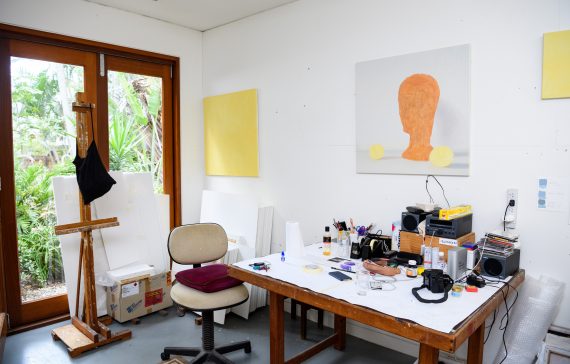
Still in the artist’s studio you can see canvases in the early stages of development. John paints his canvases with a thin wash of yellow onto which he draws the outline of the objects that he’ll paint. The use of yellow is a key that enables the artist to cross-check his colour swatches as he returns to his studio and sets about building up layers.
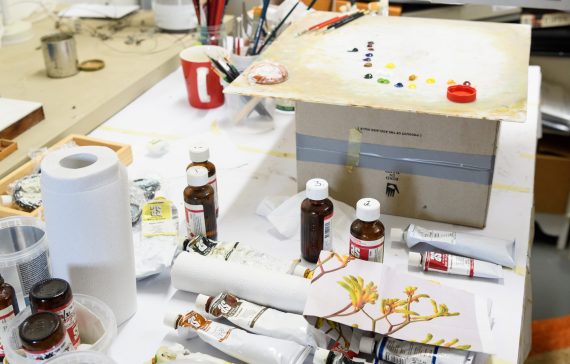
Of all the observations to notice in this image of the workbench next to John’s easel, the main detail is the level of cleanliness. Many painter’s studios are chaotic without a clean surface in sight. There is a large sheet of paper on top of the bench – another great tip, particularly if you intend to work in a similarly meticulous style as Honeywill does.

This image may appear a little disorienting. The canvas is upside down while the print-out of the composition in the background is the right way up. Notice in the previous image that John has a folded image of the kangaroo paw on his workbench. With the canvas rotated, John can paint without touching wet areas of his painting. This is important for oil painters who need to factor in lengthy drying times.